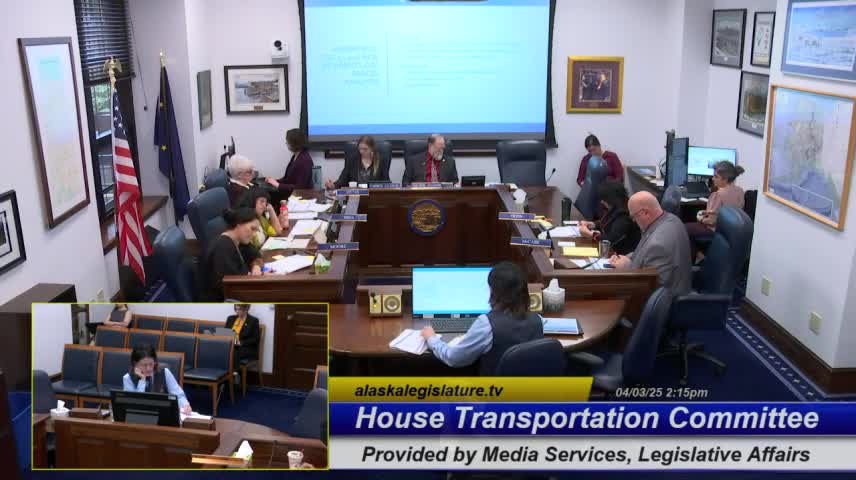Matt Borough approves new metropolitan planning area to accommodate 43,000 residents
April 03, 2024 | 2025 Legislature Alaska, Alaska

This article was created by AI summarizing key points discussed. AI makes mistakes, so for full details and context, please refer to the video of the full meeting. Please report any errors so we can fix them. Report an error »

In a pivotal meeting held by the Alaska Legislature's House Transportation Committee, officials outlined ambitious plans to accommodate a projected influx of 43,000 new residents over the next two decades. The discussions, marked by detailed analyses and strategic planning, focused on how to effectively manage urban growth while considering environmental and infrastructural constraints.
As the meeting unfolded, committee members examined parcel data to determine where these new residents might settle. They identified smaller undeveloped parcels, existing planning areas, and larger private lands as potential sites for development. Notably, public lands and agricultural areas were excluded from consideration to streamline the planning process. The committee also took into account the region's wetlands, concluding that while some areas would remain untouched, others could be developed.
The conversation shifted to the importance of density and traffic impact, with officials running multiple scenarios to assess how best to distribute the growing population. They emphasized the need for a balanced approach, weighing the benefits of urban infill against the risks of urban sprawl. The committee's projections were based on current utility capabilities, maintaining a minimum lot size for well and septic systems.
After presenting their draft metropolitan planning area boundary, the committee engaged with stakeholders, including real estate experts and the public, to gather feedback. This collaborative effort resulted in 72 comments that prompted adjustments to the proposed boundary, ensuring it reflected community needs and concerns. Key changes included incorporating significant traffic generators like schools and parks into the planning area, which would help address potential congestion and infrastructure demands.
Ultimately, the finalized boundary, approved by the policy board and the governor, encompasses 20 square miles and is designed to support a population of approximately 73,000. This proactive planning effort aims to create a sustainable urban environment that can adapt to future growth while preserving the region's natural resources. As Alaska prepares for this demographic shift, the committee's work underscores the importance of thoughtful urban planning in shaping the state's future.
As the meeting unfolded, committee members examined parcel data to determine where these new residents might settle. They identified smaller undeveloped parcels, existing planning areas, and larger private lands as potential sites for development. Notably, public lands and agricultural areas were excluded from consideration to streamline the planning process. The committee also took into account the region's wetlands, concluding that while some areas would remain untouched, others could be developed.
The conversation shifted to the importance of density and traffic impact, with officials running multiple scenarios to assess how best to distribute the growing population. They emphasized the need for a balanced approach, weighing the benefits of urban infill against the risks of urban sprawl. The committee's projections were based on current utility capabilities, maintaining a minimum lot size for well and septic systems.
After presenting their draft metropolitan planning area boundary, the committee engaged with stakeholders, including real estate experts and the public, to gather feedback. This collaborative effort resulted in 72 comments that prompted adjustments to the proposed boundary, ensuring it reflected community needs and concerns. Key changes included incorporating significant traffic generators like schools and parks into the planning area, which would help address potential congestion and infrastructure demands.
Ultimately, the finalized boundary, approved by the policy board and the governor, encompasses 20 square miles and is designed to support a population of approximately 73,000. This proactive planning effort aims to create a sustainable urban environment that can adapt to future growth while preserving the region's natural resources. As Alaska prepares for this demographic shift, the committee's work underscores the importance of thoughtful urban planning in shaping the state's future.
View full meeting
This article is based on a recent meeting—watch the full video and explore the complete transcript for deeper insights into the discussion.
View full meeting
